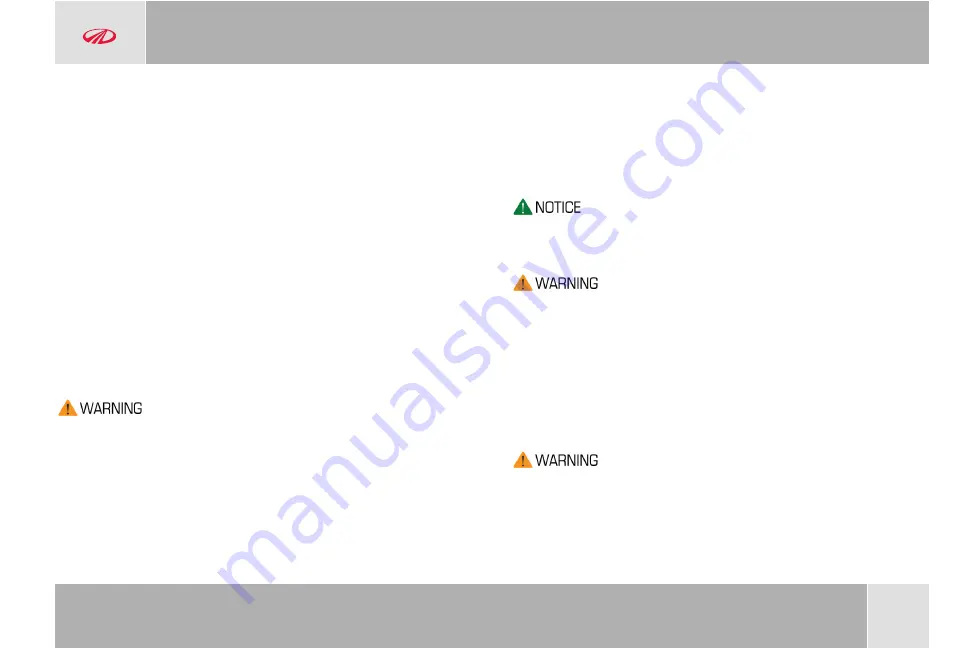
© Copyright Mahindra and Mahindra Ltd. 062016
10-5
pressures more often if subject to a wide range of outdoor
temperatures, as tire pressures vary with temperature changes.
Tire pressures change by approximately 1 psi (7 kPa) per 7°C of air
temperature change. Keep this in mind when checking tire
pressure inside a garage, especially in the winter.
When it was new, the spare tire in your vehicle was fully inflated.
However, a spare tire can lose pressure over time. In order to avoid
being stranded, check the spare tire air pressure frequently.
10.2.2 Inflating Your Tires
Safe operation of your vehicle requires that your tires are properly
inflated. Remember that a tire can lose up to half of its air pressure
without appearing flat.
At least once a month or before long trips, inspect each tire and
check the tire pressure with a tire gauge (including spare tire).
Inflate all tires to the recommended inflation pressure.
Under-inflation is the most common cause of tire failures and
may result in severe tire cracking, tread separation or
“blowout”, with unexpected loss of vehicle control and increased
risk of injury. Under-inflation increases sidewall flexing and
rolling resistance, resulting in heat buildup and internal damage
to the tire. It also may result in unnecessary tire stress,
irregular wear, loss of vehicle control and accidents.
Always inflate your tires to the recommended pressure even if it is
less than the maximum inflation pressure information found on the
tire. The recommended tire inflation pressure is found on the Tire
Label which is located on the front passenger side inner B-pillar.
Failure to follow the tire pressure recommendations can cause
uneven tread wear patterns and adversely affect the way your
vehicle handles.
If you overfill the tire, release air by pushing the metal stem in
the center of the valve. Then recheck the pressure.
After inspecting or adjusting the tire pressure, always reinstall
the valve stem cap (if equipped). This will prevent moisture and
dirt from entering the valve stem, which could damage the
stem, resulting in an unexpected loss of tire pressure, an
accident and/or personal injury.
10.2.3 Radial Ply Tires
Combining radial ply tires with other types of tires on your
vehicle will cause your vehicle to handle poorly, resulting in an
accident and/or personal injury. Always use radial tires in sets
of four. Never combine them with other types of tires.
WHEELS AND TIRES
















































